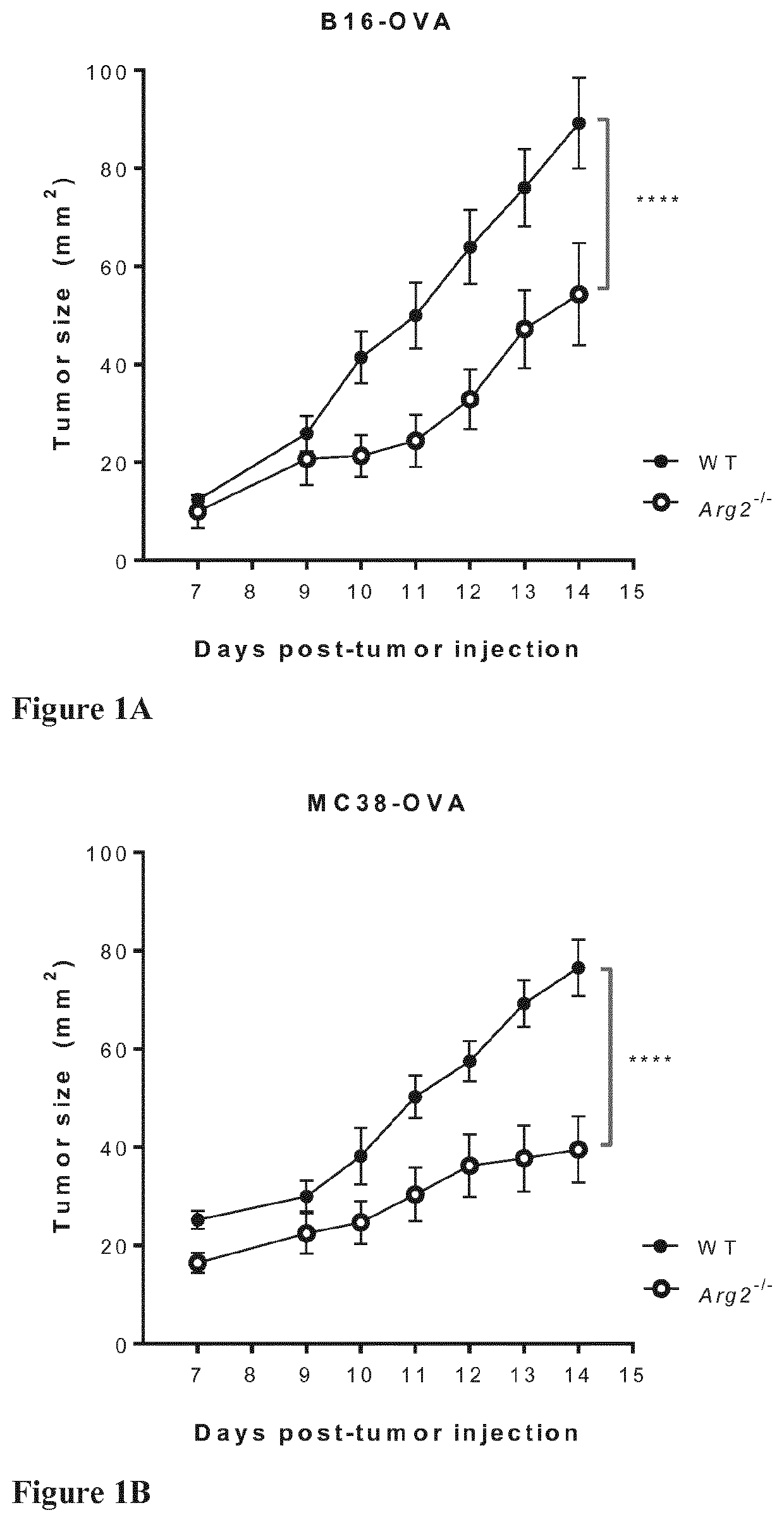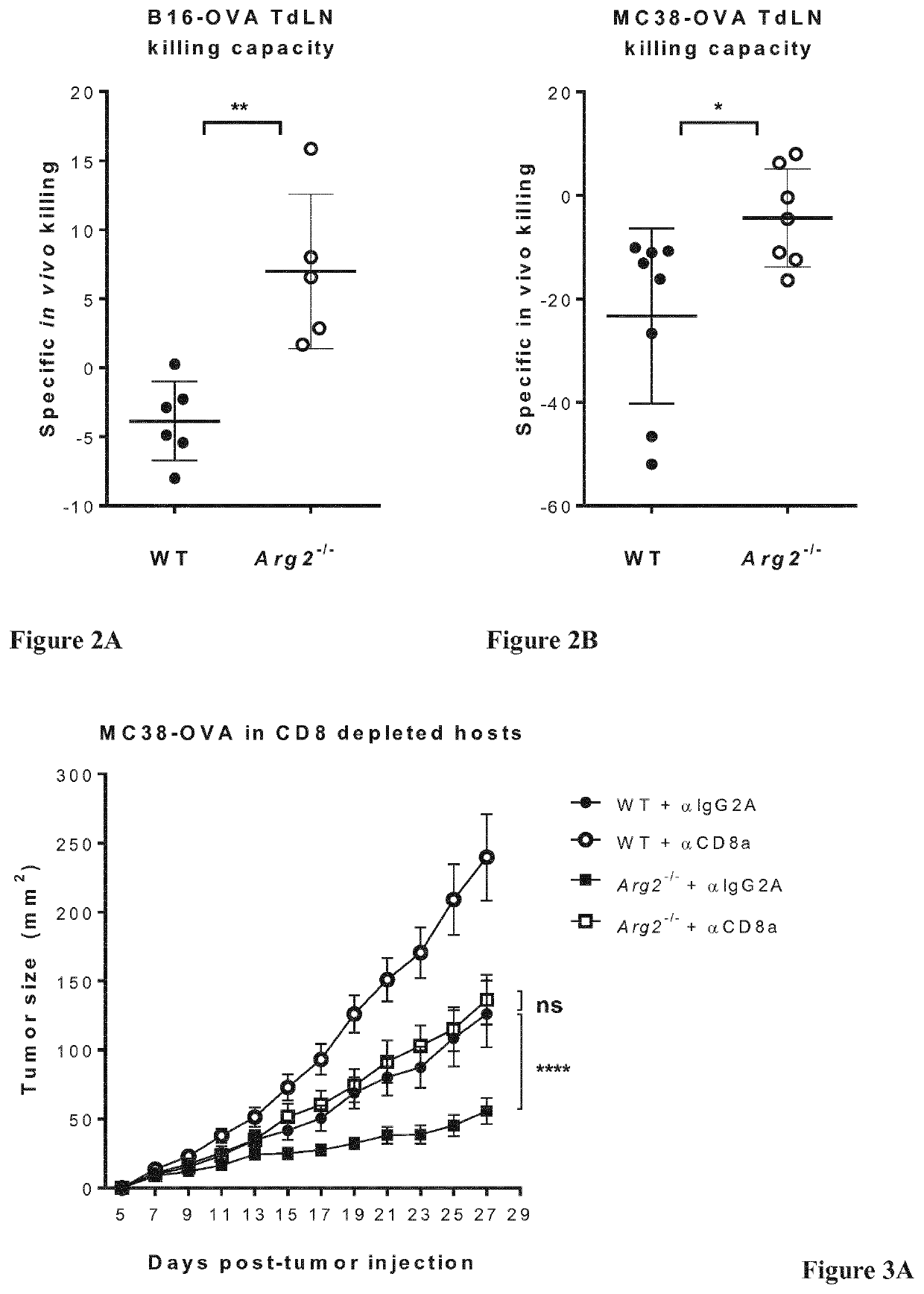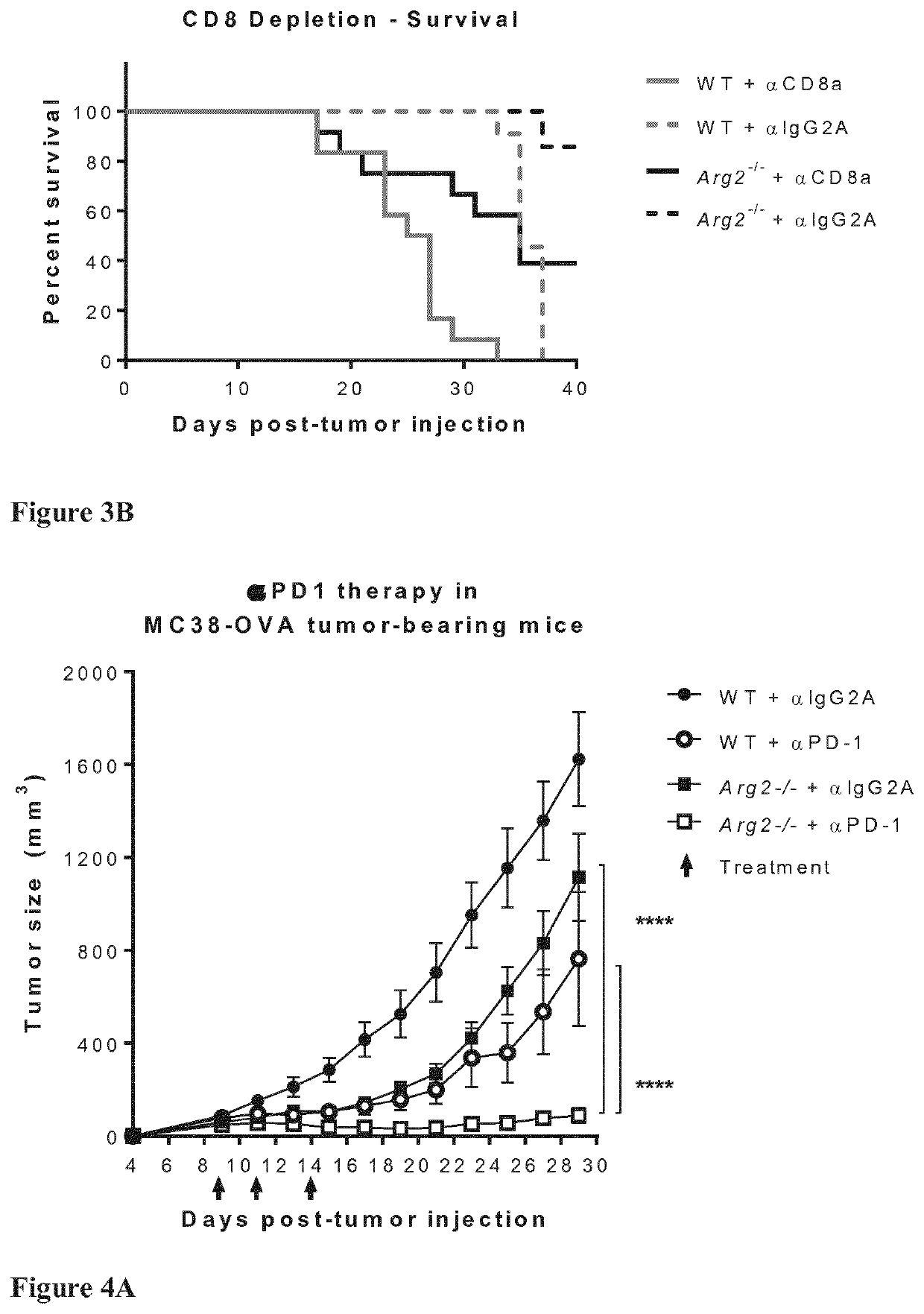Arginase suppression for cancer treatment
- Summary
- Abstract
- Description
- Claims
- Application Information
AI Technical Summary
Benefits of technology
Problems solved by technology
Method used
Image
Examples
example 2
ion of CD8+ T Cells to Control Tumor Growth and Animal Survival
[0124]To determine whether impaired MC38-OVA growth in Arg2− / − mice might be due to enhanced control by CD8+ T cells, we performed CD8+ T cell depletion experiments.
[0125]0.5×106 MC38-OVA cells were injected s.c. into the back of WT or Arg2− / − mice, and tumor growth and animal survival was monitored for 4 weeks. CD8+ T-cell depletion was performed by several i.p. injections of anti-CD8a+ depleting Ab (αCD8a) or IgG2a isotype control Ab (αIgG2A).
[0126]As shown in FIGS. 3A and 3B, reduced tumor growth and increased animal survival, respectively, in Arg2− / − mice was significantly reverted by CD8+ T cell depletion, indicating an important role of CD8+ T cell-mediated immune control. However, the anti-tumor CD8+ T cell response is not the only mechanism at play, as tumor growth in CD8+ T cell-depleted Arg2− / − mice was not fully restored to that observed in CD8+ T cell-depleted WT mice.
example 3
ic Effect of Anti-PD1 Therapy and Arg2-Deficiency on Tumor Growth Inhibition and Animal Survival
[0127]MC38 tumors are sensitive to immunotherapy with antibodies that block the T-cell inhibitory PDLL-PD1 checkpoint axis. To determine whether enhanced control of MC38 tumors induced by PDL1-PD1 blockade might collaborate with the mechanism(s) responsible for enhanced control of MC38 tumors resulting from Arg2-deficiency, WT and Arg2− / − mice bearing MC38-OVA tumors were treated with anti-PD1 antibodies.
[0128]0.5×106 MC38-OVA cells were injected s.c. into the back of WT or Arg2− / − mice. Mice were injected with anti-PD1 (αPD-1) Ab or IgG2a isotype control Ab (αIgG2A) on days 9, 11 and 14 after tumor injection (green arrows).
[0129]As can be seen from FIG. 4A (data pooled from 2 experiments. ****, p− / − mice. Importantly, treatment of Arg2− / − mice with the anti-PD1 antibody led to an almost complete abrogation of tumor growth. Tumors were actually cleared in many mice, as shown in FIG. 4B. F...
example 4
ciency in BM-Derived Cells is Responsible for Improved Control of Tumor Growth
[0130]Reciprocal bone marrow (BM) chimeric mice were generated to determine whether impaired MC38-OVA growth is a consequence of Arg2-deficiency in BM-derived cells or cells of non-hematopoietic origin. WT and Arg2− / − mice were sub-lethally irradiated to destroy the host BM. Hematopoiesis was then reconstituted by transplantation with BM cells from WT or Arg2− / − mice in all four pairwise combinations.
[0131]0.5×106 MC38-OVA cells were injected s.c. into the back of the BM chimeric mice, and tumor growth was monitored for 4 weeks. N=11 mice.
[0132]As can be seen from FIG. 5 (data is pooled from 3 independent experiments. ****, p− / − mice (Arg2− / − >WT and Arg2− / − >Arg2− / −) exhibited strongly reduced tumor growth compared to chimeras receiving BM cells from WT mice (WT>WT and WT>Arg2− / −). These results indicate that reduced tumor growth is due primarily to Arg2-deficiency in BM-derived cells.
Example 5: Arg2− / − O...
PUM
 Login to View More
Login to View More Abstract
Description
Claims
Application Information
 Login to View More
Login to View More - R&D
- Intellectual Property
- Life Sciences
- Materials
- Tech Scout
- Unparalleled Data Quality
- Higher Quality Content
- 60% Fewer Hallucinations
Browse by: Latest US Patents, China's latest patents, Technical Efficacy Thesaurus, Application Domain, Technology Topic, Popular Technical Reports.
© 2025 PatSnap. All rights reserved.Legal|Privacy policy|Modern Slavery Act Transparency Statement|Sitemap|About US| Contact US: help@patsnap.com



